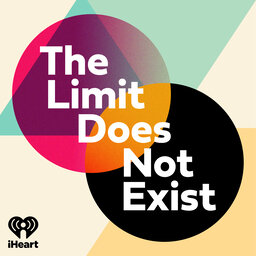The Math of Origami (Robert Lang)
Can you mathematicize art? We dive into that question and lots more with physicist, engineer and master origami artist Dr. Robert J. Lang, who merges mathematics with aesthetics to fold elegant modern origami. You’ll hear how computer programs support making better art and discover some astonishing applications of origami folding techniques. Plus, the world’s most beautiful math equation!
Learn more about your ad-choices at https://www.iheartpodcastnetwork.com
 The Limit Does Not Exist
The Limit Does Not Exist


